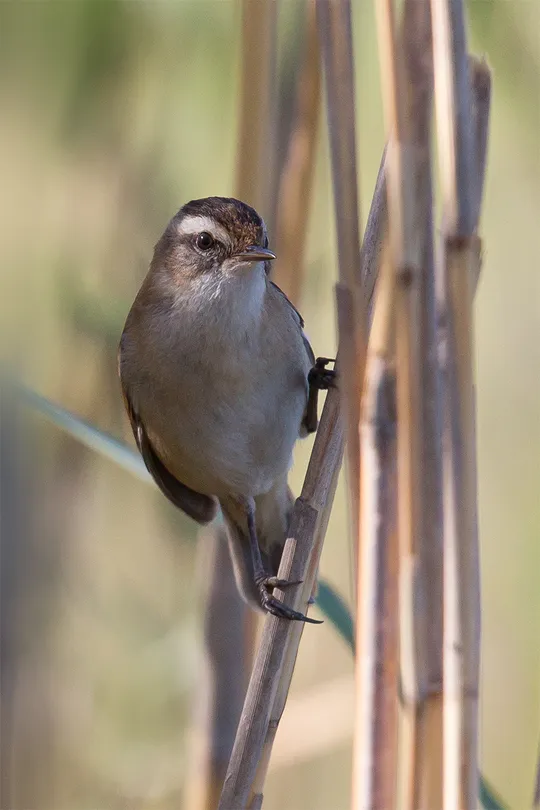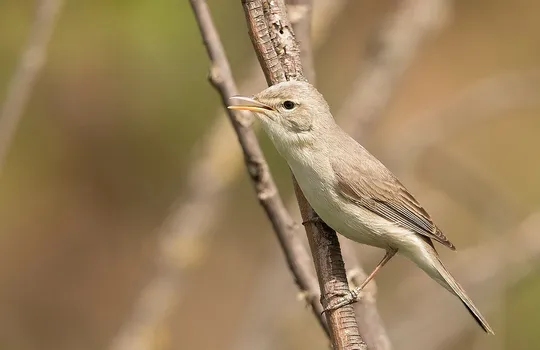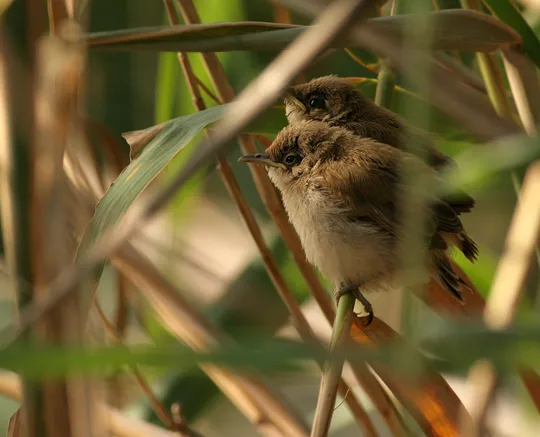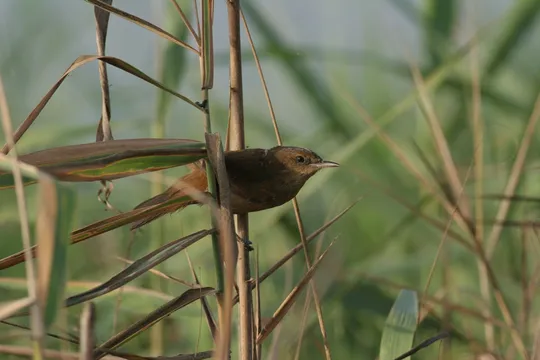Acrocephalus griseldis
 Not applicable
Not applicable
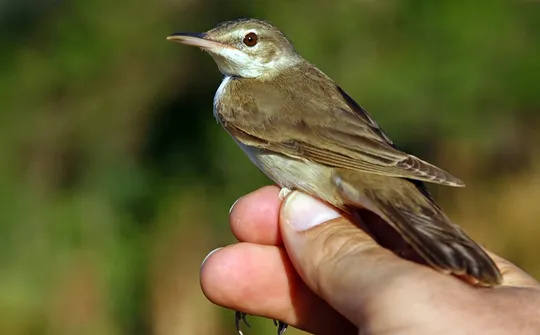
| Habitats | Wetland Thickets |
|---|---|
| Presence In Israel | Migrant |
| Breeding In Israel | Irregular Breeder |
| Migration Types | Long Range |
| Zoographical Zones | Mediterranean |
| Landscape Types | Wetlands, Wetland Thickets |
| Vegetation Types | Marsh and Riparian |
| Vegetation Densities | Medium, High |
| Nest Locations | Wetland Thickets |
| Diet Types | Invertebrate |
| Foraging Grounds | Trees and Shrubs |
| Body Sizes | Small (up to 500g) |
| Threat Factors | Wetland Drainage & Pollution |
The Purple Heron is a large, long-legged, long-necked heron, with a purplish plumage, reddish brown head and neck and a white throat streaked with black. The juvenile is paler with a browner general color. It resembles the Grey Heron in size and shape, but its color is warmer and browner, and it is smaller, slenderer and more delicate.
The Purple Heron is a colonial breeder whose breeding population in Israel is extremely small. A larger population migrates through the country in spring and autumn. The major breeding concentrations are found around Sea of Galilee and in the Hula Reserve (about 20 pairs at each site) and isolated pairs nest sporadically in the southern Golan Heights, the Hula and Northern valleys and the northern Coastal Plain (although more extensive surveys are needed). The colonies in Sea of Galilee and the Hula have not declined significantly in recent decades, but nesting in the Jezreel and Acre valleys and the Carmel coast has decreased and, in some cases, ceased completely. In the past, the species nested in much higher numbers, but the population declined because of marsh drainage and excessive use of agricultural pesticides.
No specific conservation measures have been taken for this species to date.
- פז, ע. 1986. עופות. מתוך אלון, ע. (עורך), החי והצומח של ארץ ישראל. כרך 6. הוצאת משרד הביטחון, ישראל.
- Symes, A. 2013. Species generation lengths. Unpublished, BirdLife International.
- Species page at Birdlife International
Distribution maps
The maps presented here provide visual information on the distribution of species in Israel from the past and present, and the changes in occupancy and breeding density during the comparison period. For further reading
Relative Abundance 2010-2020
Breeding density values in the current decade as determined from experts' opinion and observations from databases.
| Data Missing | Sporadic | Limited Sites | Low Density | High Density |
|---|---|---|---|---|
| 8 | 12 | 12 | 21 | 19 |
Relative Abundance 1980-1990
Density values based primarily on the book The Birds of Israel (Shirihai 1996).
| Data Missing | Sporadic | Limited Sites | Low Density | High Density |
|---|---|---|---|---|
| 5 | 14 | 14 | 17 | 22 |
Occupancy 1990-2020
The map shows differences in the species breeding distribution between the 1980's breeding map and the current weighted breeding evaluation. Negative value - species previously bred in the grid and is not presently breeding; positive value - species has not previously bred in the grid and is currently breeding.
| Data Missing | No Change | Occupancy Increase | Occupancy Decrease |
|---|---|---|---|
| 6 | 35 | 1 | 9 |
Change in Relative Abundance 1990-2020
The map shows the changes in the relative abundance of a species in each of the distribution grids between the breeding map of the 1980s and the weighted current breeding evaluation. Negative values - decline in abundance; positive values - increase in abundance; zero - no change in abundance.
| 80 to 100 | 50 | 20 to 30 | No Change | 30- to 20- | 50- | 100- to 80- | Data Missing |
|---|---|---|---|---|---|---|---|
| 0 | 4 | 2 | 22 | 12 | 14 | 11 | 16 |
| Rarity | |
|---|---|
| Vulnerability | |
| Attractiveness | |
| Endemism | |
| Red number | |
| Peripherality | |
| IUCN category | |
| Threat Definition according to the red book |
